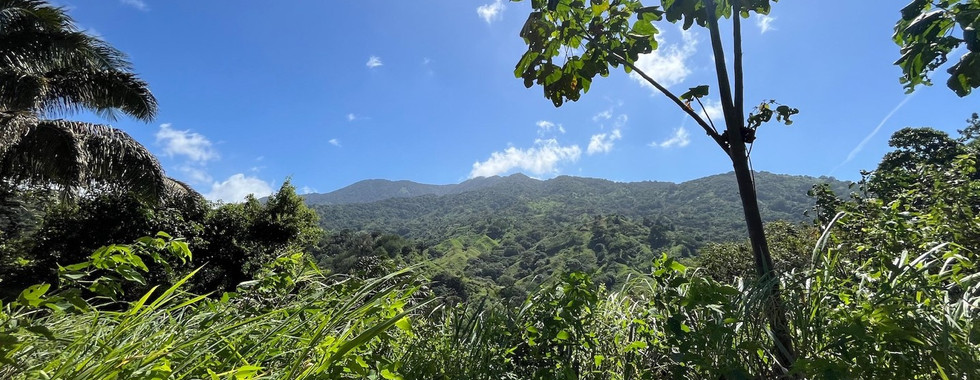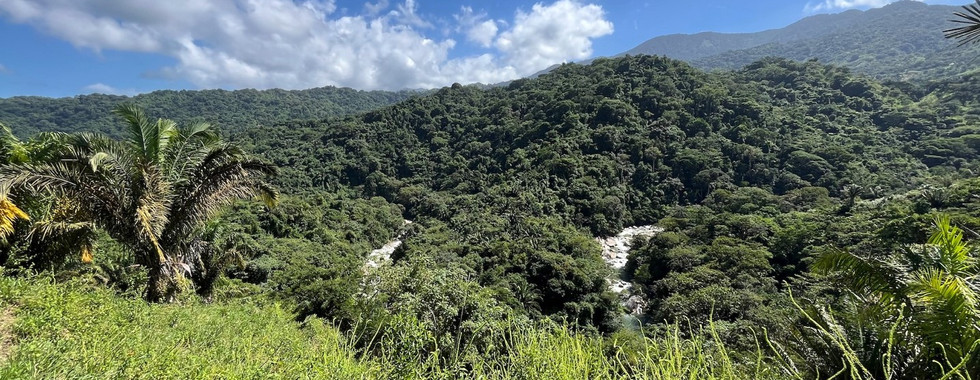Bunkuany Tayrona Trail: A Two-Day Journey into the Heart of the World
- David Roa Martin
- Apr 9
- 4 min read
The Bunkuany trail leads to a group of archaeological terraces similar to those of Ciudad Perdida/Teyuna. These were part of a Tairona settlement with residential, ceremonial, and agricultural functions, and today they are sacred pilgrimage sites for various Indigenous communities who live in this territory. These ancient stone structures are interconnected by cobbled paths through the jungle, allowing visitors to discover not only the tradition and legacy of the original peoples of the Heart of the World, but also the spectacular natural surroundings of the Sierra Nevada de Santa Marta.
Unlike Ciudad Perdida—where reaching the archaeological site takes at least two days of hiking (plus the return)—the Bunkuany trail can be done in a single day or extended over several days, up to four, with the (truly wonderful) possibility of ending the route at the beaches of Tayrona National Park.
I had the chance to experience it over two days: I visited the mythical terraces but also participated in agrotourism projects developed by local farmers, discovered a beautiful hotel nestled by a river in the mountains, interacted with the Kogui community of Teiku in Calabazo—already within the Tayrona Park—and admired the local flora and fauna, all framed by the magnificent scenery of the Sierra.
Day 1: In Search of Connection
The adventure began early, around 7:00 a.m., departing from Santa Marta in a 4x4 toward the village of Bonda, a region rich in history. Along the way, we visited an old chapel, and our local host shared stories of this small town, historically a point of connection between the city and the Sierra.

We continued along rural roads—accessible only by 4x4—until we reached the Donama Stones, a sacred site known for its mysticism and natural beauty. There, in addition to a historical explanation, we performed a small entrance ritual. I still wear, months later, a string from that ritual tied around my left wrist—a simple but powerful gesture that gave lasting meaning to what was expressed in that moment. It was my first point of connection with the region’s spirituality and Indigenous tradition.

About 40 minutes later, we left the vehicle and started hiking from Boquerón station to a lookout point, where the mountain views were already breathtaking. We walked through forest corridors and rural farms, spotting birds, a small snake, frogs… even stopping to chat with some coffee farmers who were harvesting beans.
After about 1.5 hours of walking (6 km, with 145 m of ascent and 382 m of descent), we reached the Bunkuany terraces. We explored the ancient connecting walls, the offering sites still meaningful to Indigenous communities, and enjoyed the peace of the landscape. We then descended a few hundred meters to a farmhouse with a privileged view of the mountains—an ideal spot for lunch.
After lunch and a coffee, we continued on to La Playita farm. There, a family has started a lovely agrotourism project that we would learn more about the next day. That afternoon, we wrapped up our day sharing reflections and spent the night in a cozy rustic cabin just meters from the river, its sound lulling us to sleep.
Day 2: From the Apiary to Teiku — A Journey Between Nature and Spirit
We woke early, had a coffee and a hearty breakfast as the sun gradually lit up the surrounding mountains. Then came a fascinating activity: beekeeping. We suited up in protective gear and visited the hives at La Playita to learn about honey harvesting, the world of bees, and their essential role in maintaining ecological balance. It was both educational and inspiring. Through this project, the host family contributes to the restoration of bee populations and supports pollination, a fundamental process for biodiversity.
We then toured the farm’s crops, fish ponds, and chicken coops, learning about sustainable rural production practices. We also took the chance to go down to the river for a refreshing dip, enjoying the waterfalls and lounging on giant white stones that, as García Márquez might have said, looked like "prehistoric eggs."
We left La Playita on a two-hour trail through mountains and farmland, enjoying spectacular views of the Piedras River and the Sierra Nevada landscapes, until we reached the Madreselva hotel. This hotel offers beautiful, comfortable cabins surrounded by nature and crossed by a river—an atmosphere as serene as it is unique. We had lunch there before continuing by vehicle to the final leg of our excursion.

After about 40 minutes on the road, we arrived at Tayrona Park via the Calabazo sector. From there, a 300-meter ascent begins, covering 3.5 km (around 1.5 hours on foot) to reach the Kogui village of Teiku. This time, short on time, we took mototaxis from the park entrance.
Upon arrival, we were welcomed by an Indigenous leader who gave us a tour of the village. We visited their traditional houses, learned about their way of life, their crops, sacred plants, and ceremonial sites. We ended with a "pagamento" ritual of gratitude and protection, and began our return journey—gifted with views of the snow-capped peaks of the Sierra.
The trek ended back in Calabazo, where we caught a vehicle to Santa Marta. However, it’s also possible to extend the journey by one more day and finish at the beaches of Arrecifes within Tayrona Park.
What I loved most
What I loved most about this experience was its authenticity. Since it’s off the traditional routes (we didn’t encounter any tourists along the trail—just a couple of guests at Madreselva and a small group in Teiku), the opportunity to observe the landscape in silence, to listen to nature, and to connect inwardly with the energy and magic of the place was truly special.
Our guides and hosts were incredible—people who not only know the territory and have walked it for decades, but who also embody the spiritual, cultural, and ancestral essence of the Indigenous communities that have lived here for centuries. That essence is reflected in the terraces, the stone walls, the carved rocks—but more than anything, it’s felt in the air and in the sacred energy that permeates the mythical land of the Sierra Nevada de Santa Marta.





















































Comments